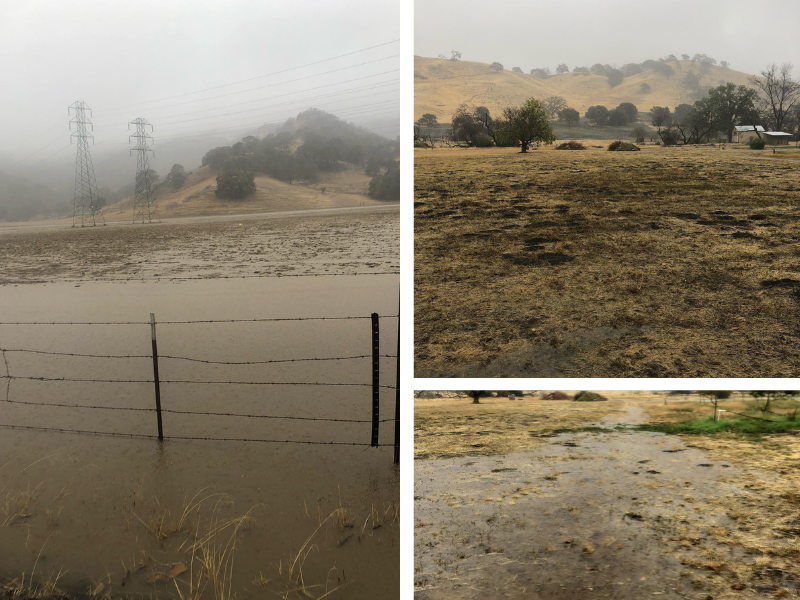Soul Food Farm‘s Alexis Koefoed shared these photos and thoughts during the rainstorm Oct. 24 that over the weekend brought more than 10 inches of rain to parts of Vacaville and at least 4 inches or more to other areas of Solano County. We wanted to share her insight about the importance of healthy soil in helping to address extreme weather events — a why farms like hers that use regenerative practices are so important.
Photos courtesy of Soul Food Farm
I thought today was a good opportunity to talk about the benefits of leaving living roots in the ground.
The first photo is the ranch directly across the road from Soul Food Farm. For 20 years this field was grazed by cattle and then rotational hay cropped, seeded and baled. While those old time farmers would not have called their farming practices regenerative, they knew how to take care of their land resources. Every year the soil provided grazing and hay crop.
Two years ago a new owner took over the same property and immediately began to overgraze the field with his cattle. To the point that the soil became completely pulverized.
Durning our frequent wind storms, a huge cloud of fecal dust blows over Soul Food Farm.
I’ve watched this living, thriving soil become degraded. A property I used to enviously wish was mine now is watched with worry about how its failure will impact our farm in a severe weather event. Like today.
So the first photo shows major flooding. Without soil cover, weeds, a crop, wild grasses, etc. There are no roots to hold the soil in place. And by extension no biology in the soil to convert carbon drawn from the air into food for the billions of living organism found in vibrant soils.
The next two photos are the fields on my farm. Where we have been practicing and learning to implement regenerative and no till practices for the last six years. The photo of the large field has no flooding.
The photo with some sitting water is roads and walking paths. A mini example of what happens when you have exposed dirt without a living plant on top.
Today while we celebrate the rain, but worry about such a huge moisture dump in a short period, I’m reminded of how important it is to manage our farmlands with integrity.
Extreme weather events are not going to diminish. And we have a huge opportunities as farmers, big or small, to use our soil as buffers to extreme weather conditions.
Healthy soils translate immediately into clean water ways, carbon sinks, healthy crops, thriving microbiology and productive domesticated animals.


